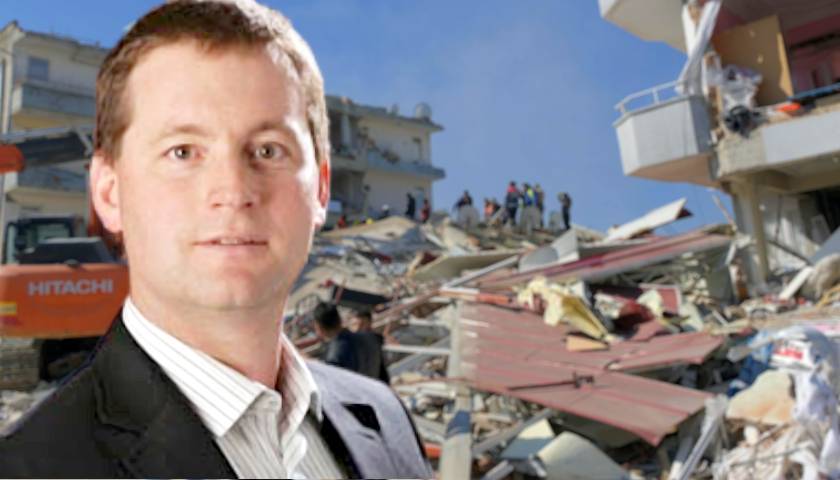by
Protect The Public’s Trust (PPT), a government watchdog group, filed a complaint Wednesday with the U.S. Department of Commerce, requesting an investigation into what PPT says are “apparent scientific violations” in relation to how National Oceanic Atmospheric Administration (NOAA) collects and reports climate-related natural disasters that exceed $1 billion in damages.
Since 1980, NOAA has reported an annual tally of the number of climate-related natural disasters in the U.S. that cause damages exceeding $1 billion after adjusting for inflation. According to NOAA’s calculations, the U.S. averaged 8.5 such events between 1980 and 2023. In the last five years, however, the average reported by the agency is 20.4 events.
In January, Just The News reported on a study by Dr. Roger Pielke Jr., professor of environmental studies at the University of Colorado at Boulder, which concerns NOAA’s “Billion Dollar Disaster” figures. Pielke’s study, which is currently going through the peer-review process, asserts that NOAA uses a flawed methodology, lacks transparency in its calculations, and misleadingly presents the data as showing trends in climate.
In its complaint, which cites Pielke’s research, PPT notes the influence of NOAA’s disaster reporting has on federal policy and research on climate change. The U.S. Global Change Research Program cites the figures as a “climate change indicator,” and they were cited in the Fifth U.S. National Climate Assessment as evidence that “extreme weather events are becoming more frequent and severe.” NOAA’s figures have also been cited in nearly 1,000 articles, according to Google Scholar.
“Sensational climate claims made without proper scientific basis and spread by government officials threaten the public’s trust in its scientific officials and undermines the government’s mission of stewarding the environment,” PPT states in its complaint.
Pielke showed that NOAA periodically added and removed events without providing any documentation or justification for the changes. The agency lacks any transparency of its sources, input data or methodologies used for the annual report, according to Pielke’s study, and this makes it impossible for an independent researcher to verify the agency’s findings.
The agency also doesn’t normalize costs, which adjusts for differences in wealth over time. It’s something Pielke has studied for decades. According to his research, more development in an area will increase the damages caused by any weather event regardless of trends in the intensity or frequency of the events, and so these differences need to be controlled for in assessing costs of disasters over time. The only adjustment NOAA makes in its tally of billion-dollar disasters is for inflation.
In a recent post on X, Stephen Strader, associate professor of geography and environment at Villanova University, illustrated the importance of normalizing disaster costs by comparing the number of homes impacted by a tornado breakout event in 1974 to the number of homes that would be impacted if the same event occurred today.
Since disaster costs over time are influenced by a range of factors that have nothing to do with climate, Pielke’s study argues, then trends in disaster costs are not a good measure for trends in climate.
In January, a NOAA spokesperson told Just The News that the “billion-dollar disaster” report is based on two decades of research and close collaboration with public- and private-sector partners. The spokesperson cited a peer-reviewed study, which lays out the agency’s methodologies, and said the agency follows Information Quality and Scientific Integrity Policies.
Michael Chamberlain, director of PPT, told Just The News that NOAA’s response doesn’t address the central claims of the group’s complaint. “The responses from NOAA to inquiries about the methodology and integrity of the ‘Billions Project’ appear to all be of the ‘you’ll just have to trust us’ variety. While they may call themselves ‘scientists,’ that’s not how science works,” Chamberlain said.
Scientific practices that adhere to principles of integrity, he added, contain concepts like curiosity, skepticism, transparency, verification and duplication of results, which are not found in NOAA’s “Billion Dollar Disaster” reports.
According to the PPT complaint, NOAA adopted an administrative order in March with the goal of strengthening “universal confidence — from scientists to decision makers to the general public — in the quality, validity and reliability of NOAA science.”
The administrative order outlines policies regarding scientific integrity, falsification and fabrication, transparency and traceability. It also lays out consequences should an investigation into an allegation of non-compliance be found to have merits, which the order says may result in personnel actions, referral to the Inspector General’s office, or NOAA’s Acquisition and Grants Office.
The complaint uses the points in Pielke’s study to demonstrate several ways that PPT says the scientific integrity policy is being violated when it comes to NOAA’s reporting on billion-dollar disasters.
Chamberlain said the problem laid out in the complaint goes beyond NOAA and its report.
“Despite their professed fealty to science, we have documented a number of incidents during the Biden administration, detailed in our “Science Undermined” series, in which science has been misapplied, misrepresented, or shoved aside in favor of political and policy considerations,” Chamberlain said.
– – –
Kevin Killough is a reporter at Just The News.
Photo “Roger Pielke, Jr” by Center for Science and Technology Policy Research; background photo “Natural Disaster” by Emirhan Emiroğlu.




